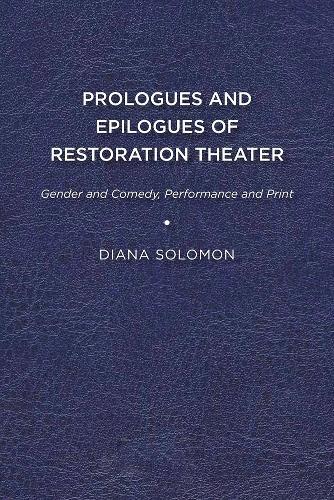Overview
Often perceived as merely formulaic or historical documents, dramatic prologues and epilogues – players' comic, poetic bids for the audience's good opinion – became essential parts of Restoration theater, appearing in over 90 percent of performed and printed plays between 1660 and 1714. Their popularity coincided with the rise of the English actress, and Prologues and Epilogues of Restoration Theater unites these elements in the first book-length study on the subject. It finds that these paratexts provided the first sanctioned space for actresses in Britain to voice ideas in public, communicate directly with other women, and perform comedy – arguably the most powerful type of speech, and one that enabled interrogation of misogynist social practices. This book provides a taxonomy of prologues and epilogues with a corresponding appendix, and demonstrates through case studies of Anne Bracegirdle and Anne Oldfield how the study of prologues and epilogues enriches Restoration theater scholarship. Published by University of Delaware Press. Distributed worldwide by Rutgers University Press.
Full Product Details
Author: Diana Solomon
Publisher: University of Delaware Press
Imprint: University of Delaware Press
Dimensions:
Width: 15.20cm
, Height: 1.80cm
, Length: 22.90cm
Weight: 0.426kg
ISBN: 9781644530764
ISBN 10: 1644530767
Pages: 272
Publication Date: 11 April 2013
Recommended Age: From 16 to 99 years
Audience:
College/higher education
,
College/higher education
,
Professional and scholarly
,
Tertiary & Higher Education
,
Tertiary & Higher Education
Format: Paperback
Publisher's Status: Active
Availability: In Print

This item will be ordered in for you from one of our suppliers. Upon receipt, we will promptly dispatch it out to you. For in store availability, please contact us.
Reviews
Although prologues and epilogues are a large part of Restoration drama they have rarely been studied in depth. This work by Solomon begins to rectify that lack by considering how these types of paratexts support--or undermine--gender norms when an actor speaks the words. Solomon begins by defining types of prologues and epilogues and then she explores those types in detail. She also offers several case studies, one of Anne Bracegirdle (a famous and famously virginal actress) and the other of an epilogue as famous as its play, which serves as an example of the period's conflict between tragic plays and comic, often bawdy, epilogues. The author argues that the body and persona of the actress worked as a prop or metatext, so that Nell Gwyn's well-known affair with Charles II supported the shift from tragic denouement to comic epilogue, and Anne Bracegirdle's customary virginity allowed her to speak directly, even radically, to her female audiences. Although sometimes overly reliant on comparisons to modern female stand-up, Solomon's work is nonetheless thoughtful and very well supported, offering a new way of understanding particular Restoration plays and the wider theatrical world of the period. Summing Up: Highly recommended. Upper-division undergraduates, graduate students, and faculty.--CHOICE
Author Information
Diana Solomon is associate professor of English at Simon Fraser University.



